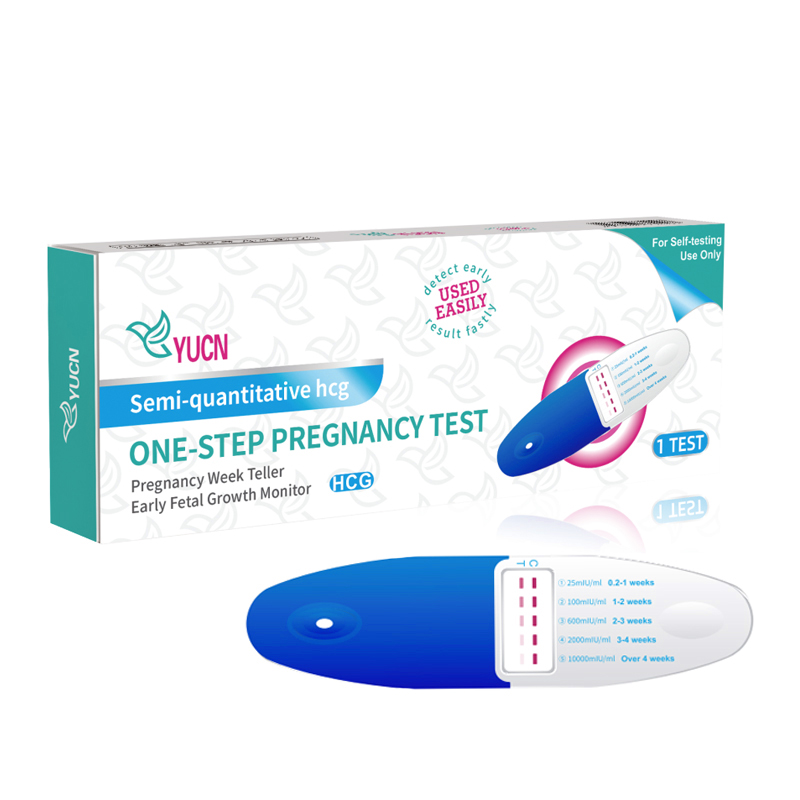Apr . 19, 2024 14:41 Back to list
Strips of Hope: Accuracy of Home Pregnancy Tests and New Developments
The first home pregnancy test was introduced in 1976. Since then, pregnancy tests have become the most common diagnostic assay used at home. Pregnancy tests use antibodies to detect human chorionic gonadotropin (hCG). It is an ideal marker of pregnancy since it rises rapidly and consistently in early pregnancy and can be detected in urine. The most advanced home pregnancy test currently available assesses the level of hCG found in urine and claims to provide women with reliable results within just a few weeks of pregnancy. Today, over 15 different types of home pregnancy test are available to buy over the counter in Germany. Many tests claim to be highly accurate and capable of detecting pregnancy before the next monthly period is due, although claims such as 8 days prior to menstruation are unrealistic. However, users and healthcare professionals should be aware that, although all are labelled as CE, there are currently no standard criteria for testing performance and claims. This review provides an overview of the development of home pregnancy tests and the data on their efficacy together with an analysis of published data on the accuracy of hCG for the detection of early pregnancy and studies on the use of home-based pregnancy tests. Preliminary data on some home pregnancy tests available in Germany are presented which indicate that many results do not match the claims made in the package insert. Healthcare professionals and women should be aware that some of the claims made for home pregnancy tests are inconsistent and that common definitions and testing criteria are urgently needed.
Introduction
Home pregnancy testing, which is done via the detection of human chorionic gonadotropin (hCG) in urine, has made considerable progress since its inception in 1976. Today in Germany, around 15–20 different home pregnancy tests are sold over the counter (in pharmacies and drugstores), a selection of which are described in Table 1. The package inserts of most available tests claim that the accuracy of the tests are “over 99 %” and “highly sensitive”. However, the majority of these over-the-counter pregnancy tests have not been tested in independent, prospective studies and their true accuracy has not been evaluated. None of the German supervisory authorities such as the Federal Institute for Drugs and Medical Devices (Bundesinstitut für Arzneimittel und Medizinprodukte or BfArM, http://www.bfarm.de) or the Central Authority of the Länder for Health Protection in Medicinal Products and Medical Devices (Zentralstelle der Länder für Gesundheitsschutz bei Arzneimitteln und Medizinprodukten or ZLG, https://www.zlg.de) do not currently test or approve tests. For self-tests, such as home pregnancy tests, a technical file or design dossier is prepared, which is then reviewed by a notified body prior to marketing; this notified body must be an organisation accredited and recognised within the European Union as capable of performing conformity assessments 1. The only information currently available on the accuracy of pregnancy tests is from non-institutional and non-scientific publications 2. This review provides an important update on current scientific knowledge and published literature on urinary home pregnancy tests. It also provides urgently needed data on the accuracy of commonly available tests and discusses new developments relating to the measurement of urinary hCG to estimate pregnancy.


